Israel’s forces set up to punch deeper into Gaza with largest assault of war so far
Tanks and troops, backed by pounding airstrikes, look to create the space to press on, but face fierce clashes with Hamas at a number of locations. Kim Sengupta reports from Sderot, close to the Gaza border

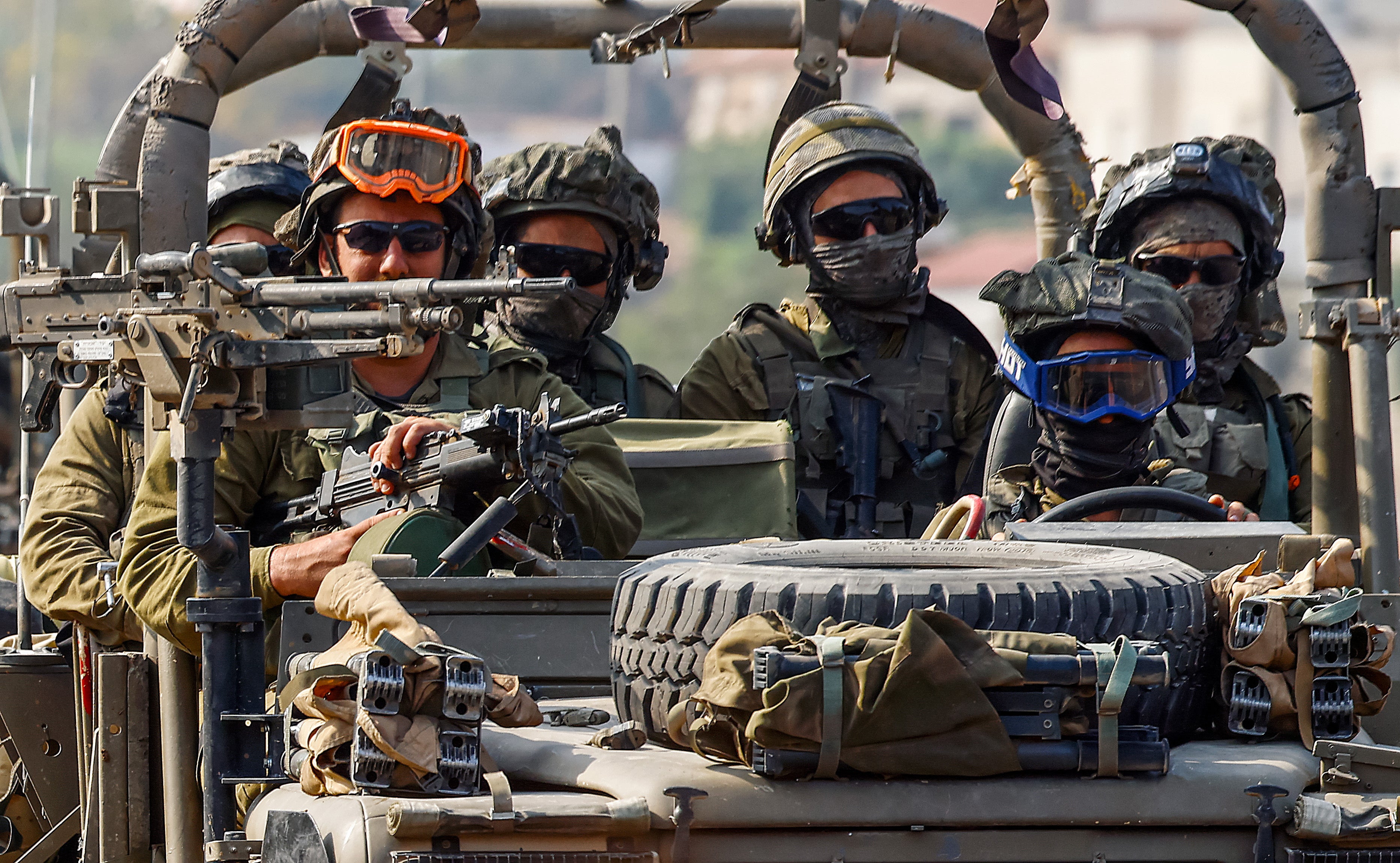
In their biggest ground operation of the war so far, Israeli forces appear to have established, after fierce fighting, bridgeheads in northern Gaza for massed troops and tanks to punch south deeper into the territory.
The attack, which began on Friday night, was much larger in scope and scale than the half-dozen previous raids, with more than a hundred warplanes carrying out pounding strikes for hours from the air while Merkava tanks and Namer armoured carriers and troops moved in on the ground.
The aim was to destroy Hamas’s defensive positions, flush out ambush points, and sweep for mines and boobytraps. There was stubborn resistance at a number of points, with prolonged clashes in the Beit Lahia and Beit Hanoun area and further east near the Bureji refugee camp near the southern city of Khan Younis, a place to which people had fled after warnings to leave their homes in the north.
The deep echoes of tank and artillery rounds, missile strikes and machine-gun fire came across the Israeli border throughout the night under a sky lit by the orange glow of Gaza burning.
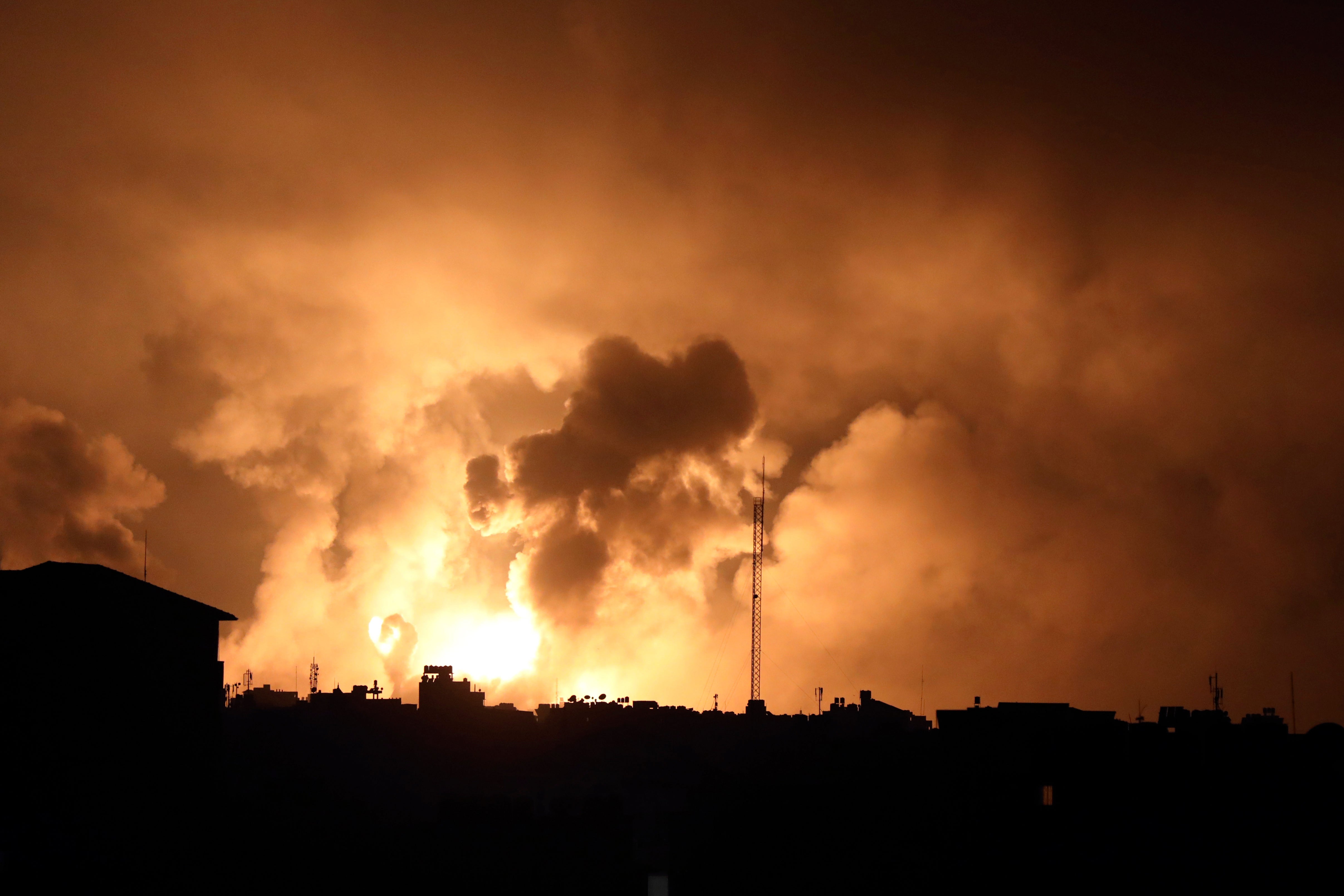
The fighting continued into the early hours of Saturday morning before the guns fell silent. Gaza was left covered in a shroud of acrid smoke and dust through which surveillance drones circled in wide arcs.
Unlike in the previous incursions, tanks and armoured cars appeared to have stayed on across the border, after falling back from some of the areas of the most intense skirmishes. Israeli Defence Forces (IDF) refused to comment on whether they will stay in Gaza holding vantage points. Rear Admiral Daniel Hagari, a military spokesperson, said that forces were “still in the field fulfilling their tasks”.
Before the operation had begun, Mark Regev, adviser to the Israeli prime minister Benjamin Netanyahu, and a former ambassador to the UK, declared: “Tonight they shall feel our wrath, tonight we are starting payback; when this is over, Gaza will be very different.”
The Israeli military claimed to have hit 150 targets underground, including parts of the tunnel complex which will be a key arena when combat goes deeper into Gaza. Rows of Caterpillar D9 armoured bulldozers, which can be used to gouge through some of the subterranean passageways, were lined up in formation to advance.
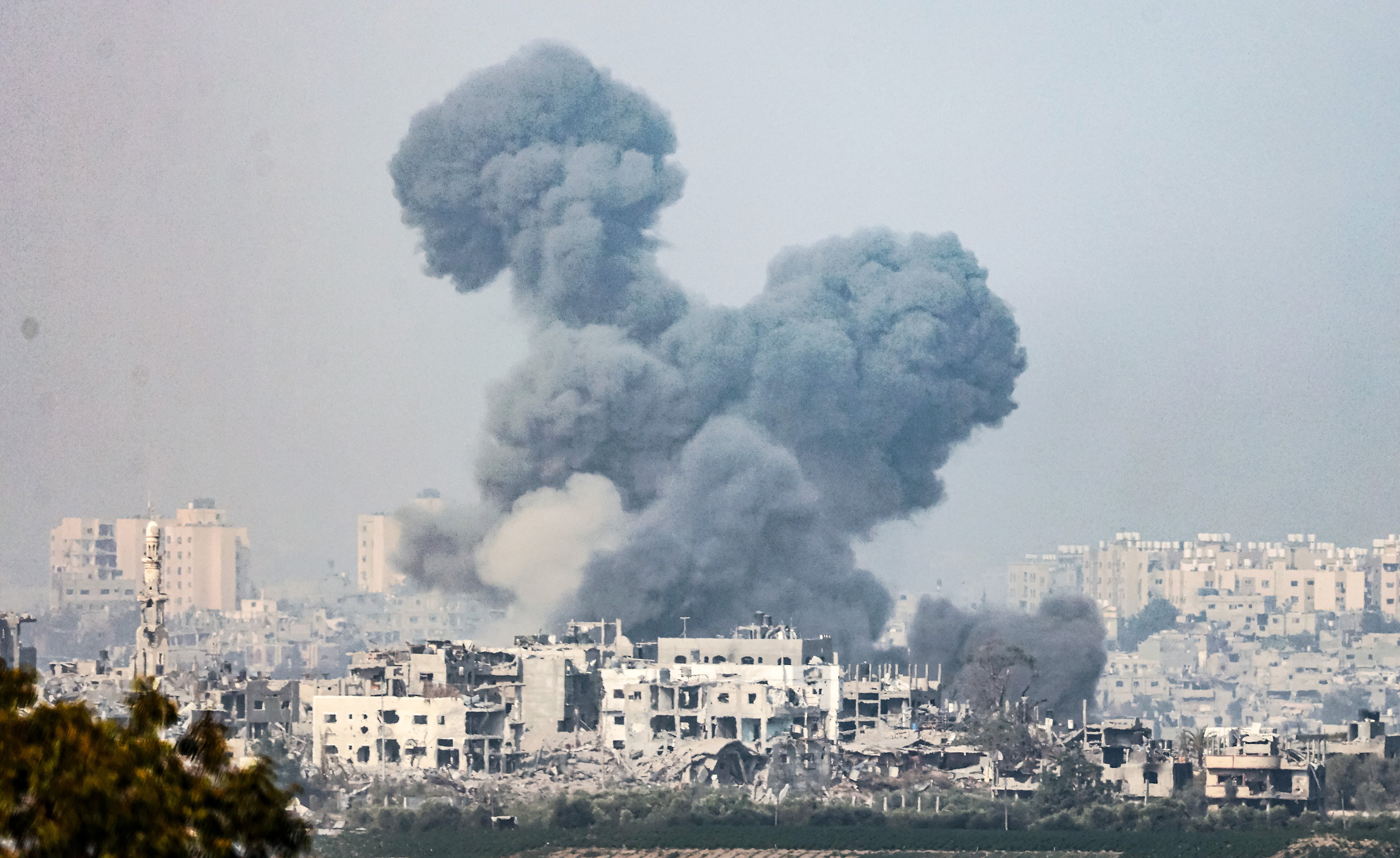
The Israeli military also claimed to have killed Asem Abu Rakaba, in charge of Hamas’s air operations including UAVs, drones and paragliders which were all used in the group’s assault three weeks ago in which more than 1,400 people were killed and around 230 taken hostage.
Rakaba had been in charge of the Hamas fighters in the raid, and hunting down and eliminating him had been a priority for the Israeli intelligence service and the military, who say that he was killed by missiles fired from an F-16 warplane.
Hamas said in a statement that its fighters were engaging with the Israelis in multiple locations, declaring “Netanyahu and his defeated army will not be able to achieve any military victory”.
The group had called for Palestinians in Israel and the occupied territories to take to the streets and there were clashes during protests in the West Bank during the night. On Saturday morning Israeli forces moved into the area to carry out searches and arrests which led to further violence.
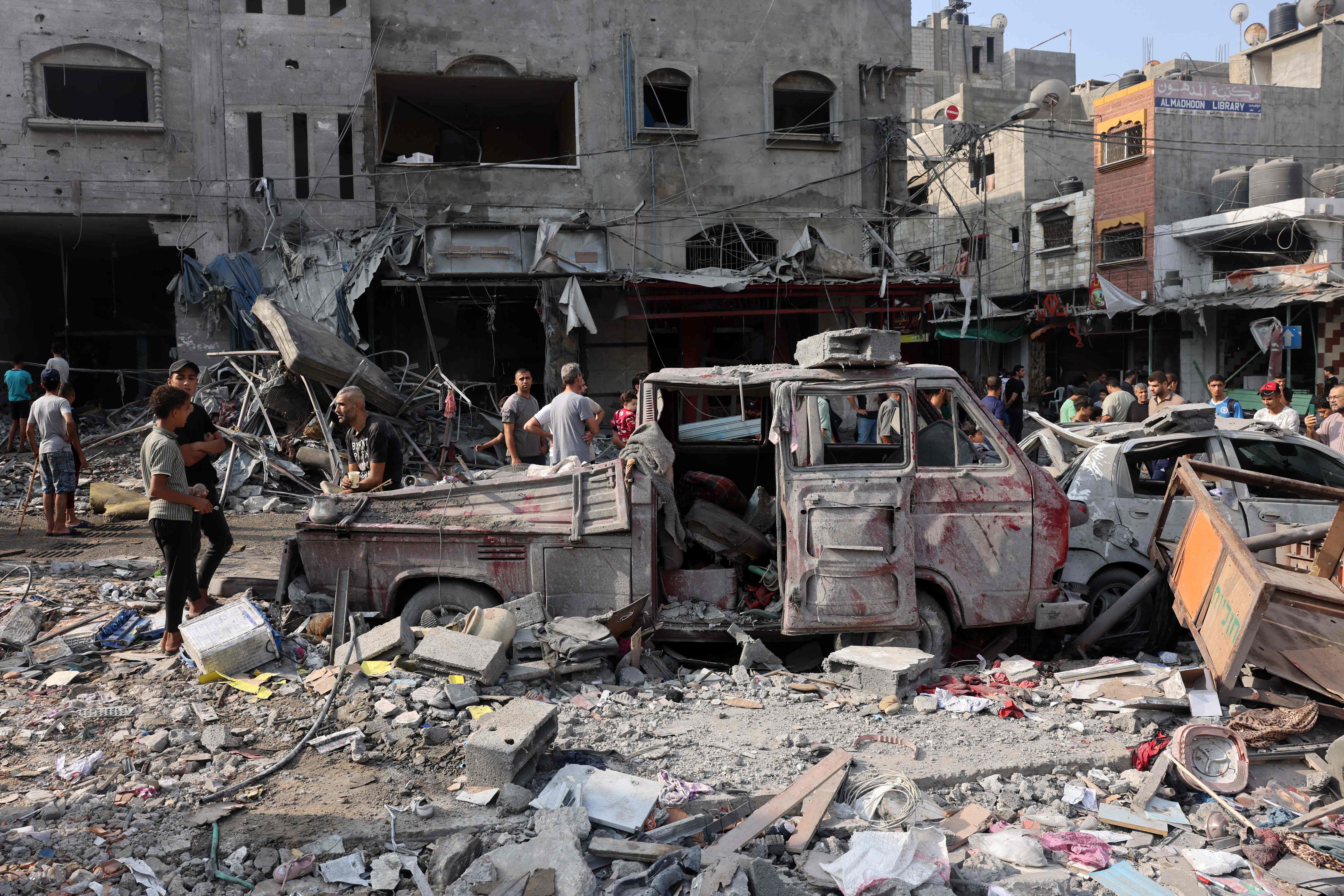
Inside Gaza, internet access had been all but shut down with little emerging from the ground about the level of death and destruction following the night of carnage. The Palestinian telecom provider, Paltel, reported “complete disruption” of internet, cellular and landline services with satellite telephones the only source of communications. The UN said it had been unable to contact their area offices distributing aid.
Rushdi Abualouf, a BBC journalist working in the territory, described scenes of fear and chaos. “There was a huge bombardment in the north of Gaza Strip on a scale we’ve never seen before. At the hospital here, ambulance drivers told me they couldn’t communicate with anyone, so they were just driving in the direction of the explosions,” he said.
“There’s been panic everywhere – even here in Khan Younis where the bombing was less – as people try to reach family members in other areas to check they are safe, but the phones have been cut off.”
There was anger as well as fear from the families of the Gaza hostages. They issued a statement saying: “This night was the worst of all nights. It was an unending night, against the background of the IDF’s major operation in the Gaza Strip, and complete uncertainty regarding the fate of the abductees who are being held there and are also subject to the heavy bombardment.
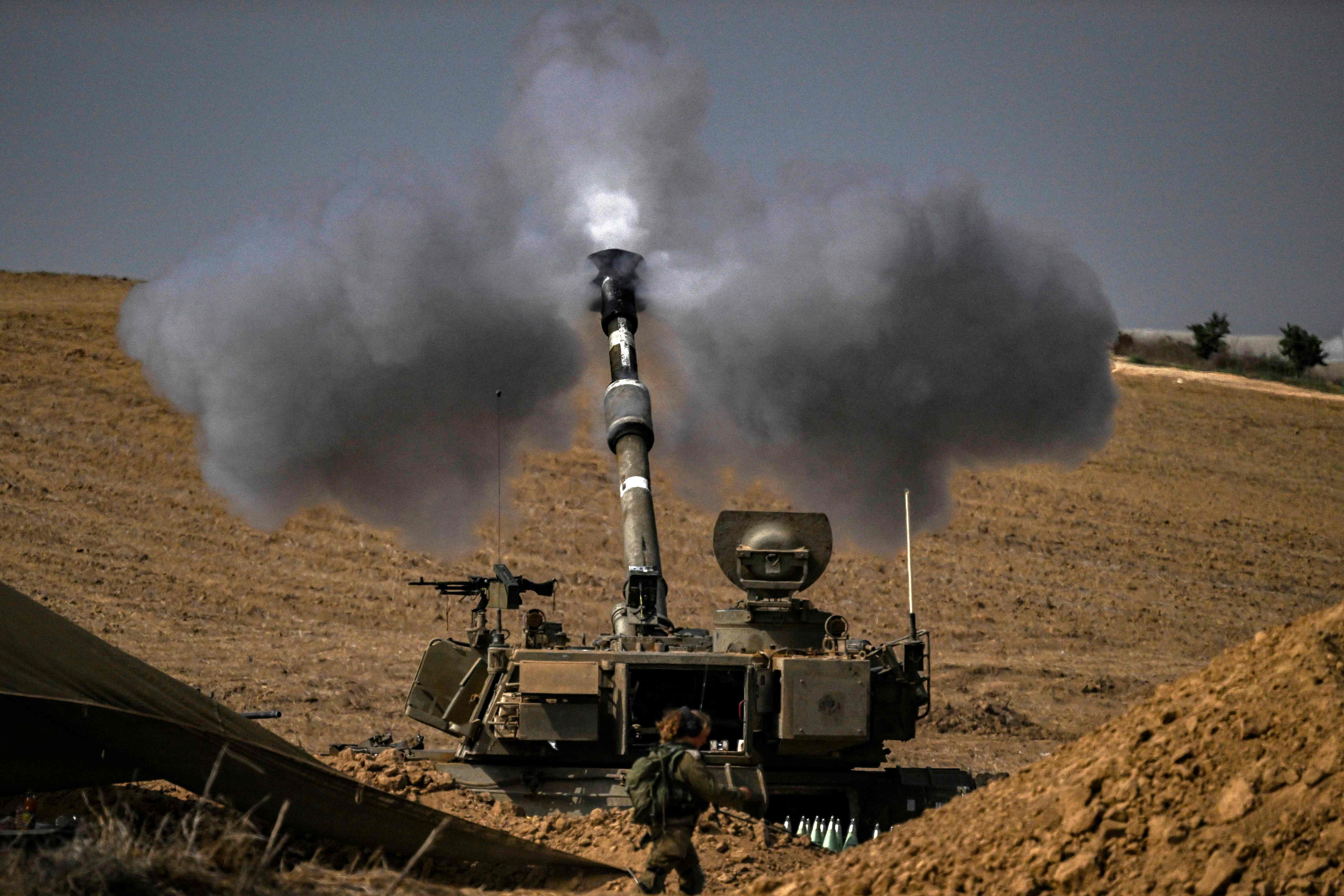
“Anxiety, frustration, and especially enormous anger that nobody from the war cabinet bothered to meet with the families of the abductees to explain to them one thing – whether the ground operation endangers the safety of the hostages. The families are anxious for the fate of their loved ones and are waiting for an explanation. Every minute that passes feels like an eternity.”
Most of the hostages are believed to be kept underground. Yocheved Lifshitz, 85, one of four people released so far, has spoken of how she and fellow captives were forced to walk for up to three hours “in a spider’s web of tunnels”.
The Israeli military says there are almost 500km (310 miles) of tunnels underneath Gaza, with some as deep as 45m. Studies show that tackling them would need oxygen tanks. The view inside them would be restricted with most night-vision goggles losing effectiveness due to the lack of ambient light. Standard assault rifles are too big for the narrow spaces and shooting of any firearms can have damaging concussive effect.
The Israeli military insists, however, that they have got plans, planned and practised over the years, on how to carry out missions in the tunnels. But the defence minister, Yoav Gallant, has acknowledged that it will “take a long time” to dismantle the network.
The US defence secretary, Lloyd Austin, has been holding almost daily telephone calls with Mr Gallant. Mr Austin has pointed to the huge difficulties of urban combat in a densely populated area, giving examples of the problems faced by US and British troops in Iraq and Afghanistan. He has also stressed to the Israeli minister the need to minimise civilian collateral damage in the coming turmoil.






Join our commenting forum
Join thought-provoking conversations, follow other Independent readers and see their replies
Comments